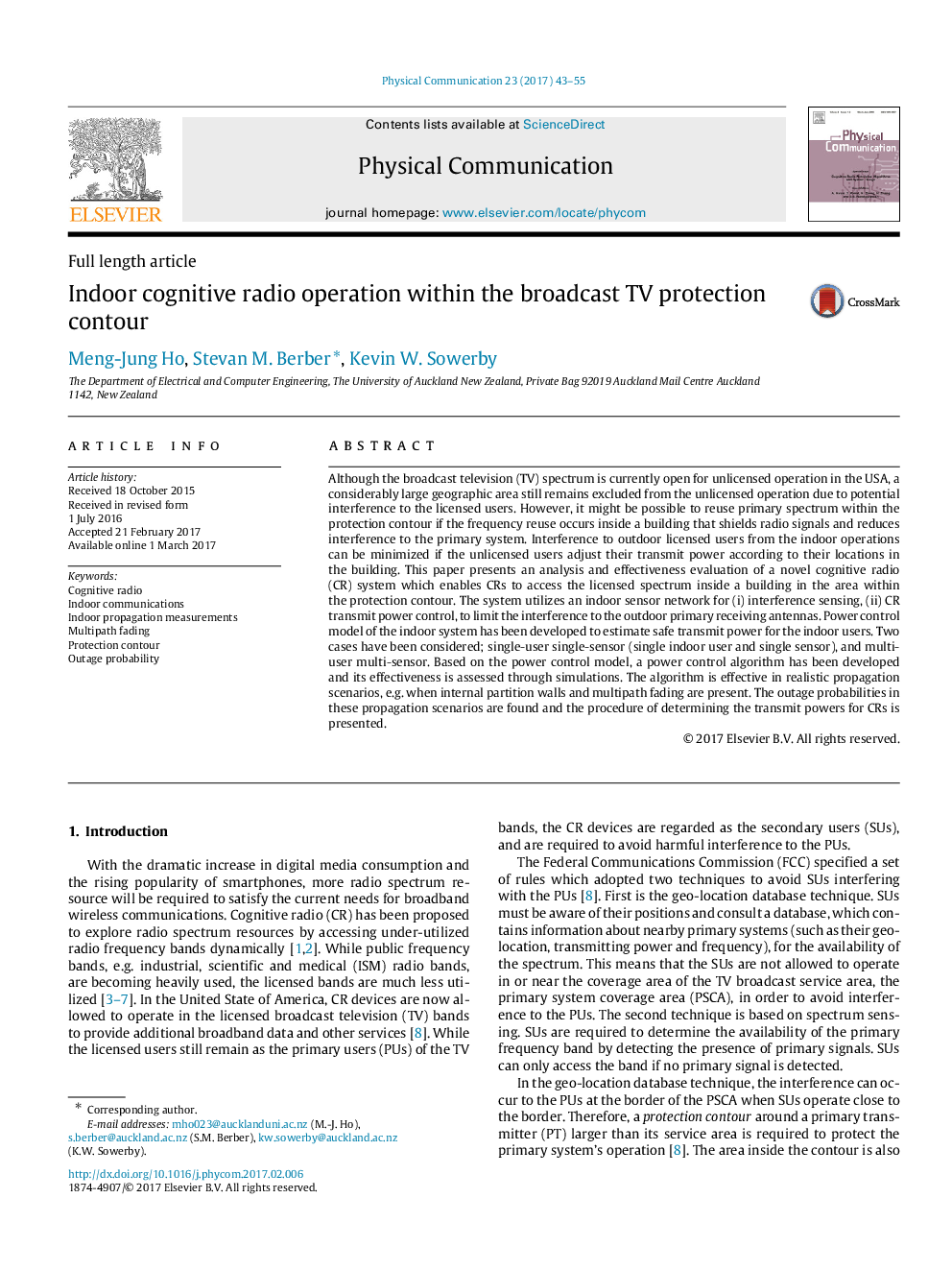| Article ID | Journal | Published Year | Pages | File Type |
|---|---|---|---|---|
| 4957645 | Physical Communication | 2017 | 13 Pages |
Abstract
Although the broadcast television (TV) spectrum is currently open for unlicensed operation in the USA, a considerably large geographic area still remains excluded from the unlicensed operation due to potential interference to the licensed users. However, it might be possible to reuse primary spectrum within the protection contour if the frequency reuse occurs inside a building that shields radio signals and reduces interference to the primary system. Interference to outdoor licensed users from the indoor operations can be minimized if the unlicensed users adjust their transmit power according to their locations in the building. This paper presents an analysis and effectiveness evaluation of a novel cognitive radio (CR) system which enables CRs to access the licensed spectrum inside a building in the area within the protection contour. The system utilizes an indoor sensor network for (i) interference sensing, (ii) CR transmit power control, to limit the interference to the outdoor primary receiving antennas. Power control model of the indoor system has been developed to estimate safe transmit power for the indoor users. Two cases have been considered; single-user single-sensor (single indoor user and single sensor), and multi-user multi-sensor. Based on the power control model, a power control algorithm has been developed and its effectiveness is assessed through simulations. The algorithm is effective in realistic propagation scenarios, e.g. when internal partition walls and multipath fading are present. The outage probabilities in these propagation scenarios are found and the procedure of determining the transmit powers for CRs is presented.
Related Topics
Physical Sciences and Engineering
Computer Science
Computer Networks and Communications
Authors
Meng-Jung Ho, Stevan M. Berber, Kevin W. Sowerby,
